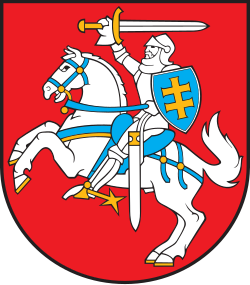| | ||||||||||||||||||||||||||||||||||||||||||||||||||||||||||||||||||||||||||||||
| ||||||||||||||||||||||||||||||||||||||||||||||||||||||||||||||||||||||||||||||
All 85 seats in the Seimas 43 seats needed for a majority | ||||||||||||||||||||||||||||||||||||||||||||||||||||||||||||||||||||||||||||||
This lists parties that won seats. See the complete results below.
| ||||||||||||||||||||||||||||||||||||||||||||||||||||||||||||||||||||||||||||||
 |
|---|
| |
Parliamentary elections were held in Lithuania between 8 and 10 May 1926. [1] The Lithuanian Popular Peasants' Union remained the largest party, winning 24 of the 85 seats in the third Seimas. [2] They formed a left-wing coalition government with the Social Democratic Party of Lithuania, which was overthrown in a military coup in December. [3] The Seimas was disbanded in 1927 and Lithuanian Nationalist Union leader Antanas Smetona was appointed President. [3]
